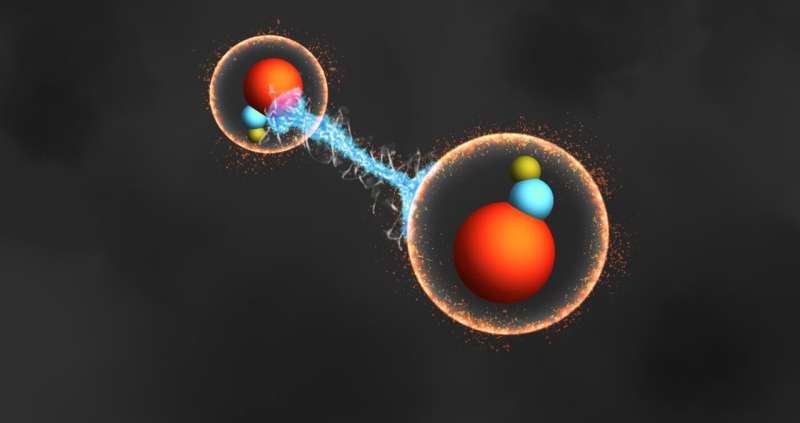New Approach Suggested for Hunting Nonconformities from the Standard Model of Physics

November 29, 2023
This article has received an extensive review consistent with the editorial policies and procedures of Science X. Its credibility has been validated through the following editorial highlights:
- Fact-checked
- Peer-reviewed publication
- Trusted source
- Proofread
Contributions by Whitney Clavin from the California Institute of Technology
Physicists are actively researching atoms and molecules, looking for behaviors that defy the well-establish Standard Model of particle physics. Violations of this model might suggest a "new physics", as physicists often refer to it.
Caltech assistant physics professor, Nick Hutzler and his team are focusing on particular deviations which might clarify why our universe is composed primarily of matter. Following the birth of our universe around 14 billion years ago, it is postulated that matter and antimatter existed in equal proportions. Given that matter and antimatter typically neutralise each other, scientists are seeking to identify the asymmetry which allowed matter to prevail over antimatter.
Hutzler's team uses tabletop experiments to identify symmetry violations—irregularities in particle behaviours which resulted in a universe dominated by matter. Their recent findings have been published in Physical Review Letters. The group, spearheaded by Chi Zhang, postdoctoral scholar research associate in physics at Caltech, have devised a method of enhancing their studies through entanglement. This term from quantum physics describes how two separate particles can remain connected, regardless of the fact that they are not in directly contact.
In this context, the researchers have developed a new technique for linking arrays of molecules, which serve as aids for measuring symmetry violations. The entanglement of these molecules makes the arrays less reactive to background disturbances which could interfere with the experiment, while simultaneously enhancing sensitivity to the signal being sought.
'It's akin to binding a bunch of rubber duckies together,' explains Hutzler. 'In measuring their movement across a bathtub, the duckies would become less responsive to the disruption of splashing water when linked, and more reactive to aspects like the flow of a current, as they would react to it as a unified entity.'
Zhang adds, 'We need a high sensitivity level to the structure of the molecules. Uncontrolled electromagnetic fields emanating from the experimental apparatus can impede our measurements. However, we now have a new protocol for entangling the molecules which makes them less reactive to this interference.'
This innovative method could be used to detect minute tilts in electrons, which could be induced by electric fields within their molecules. 'These minor rotations would indicate an interaction between electrons or nuclear spins and electric fields, which contravenes the Standard Model,' says Hutzler.
'Conventional ways of using entanglement generally increase sensitivity to disturbances,' Hutzler continues. 'Chi has discovered a method of reducing this sensitivity, while simultaneously benefitting from a sensitivity increase due to entanglement.'
Another recent experimental breakthrough, featured in Science and led by Hutzler and John M. Doyle from Harvard University, exemplified that the polyatomic molecules used in such research have exceptional abilities to shield themselves from electromagnetic interference, although without the sensitivity boost gained through entanglement.
In this study, the scientists managed to adjust the molecule's sensitivity to external fields, even making the sensitivity disappear, effectively immunising the molecules from interference.
'Armed with the advantages of entanglement, scientists can extend these experiments to probe increasingly unexplored aspects of new physics,' concludes Hutzler.
Journal information: Physical Review Letters, Science
Article provided by the California Institute of Technology.




